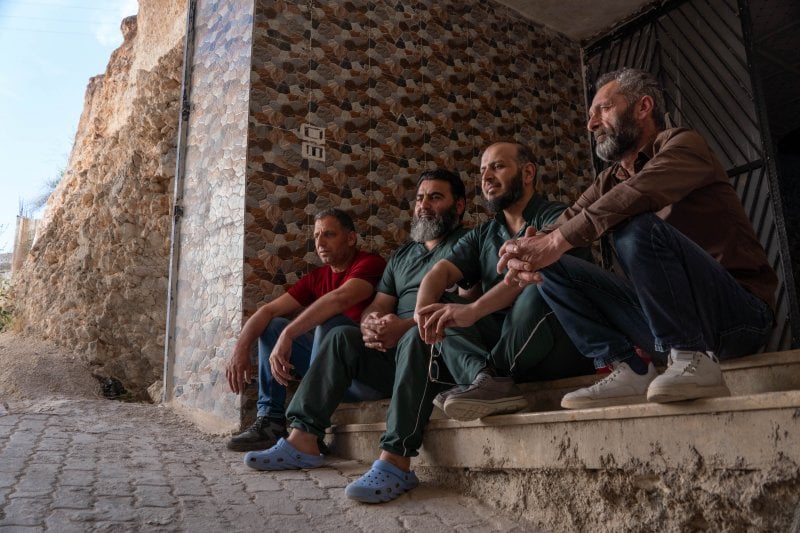Samer Baccour walked through the hallways of a dimly lit medical centre in the countryside of Idlib, Syria. As he descended a flight of stairs, he stooped slightly to avoid the uneven rock ceiling.
It’s only when the nurse emerged from the front entrance of the hospital that the unusual architecture of the facility could be truly appreciated. As Baccour turns his head towards the sun, his eyes are met with towering mountains. The hollow he’s in was once a haven for those injured in the bloody chaos of the 14-year Syrian civil war.
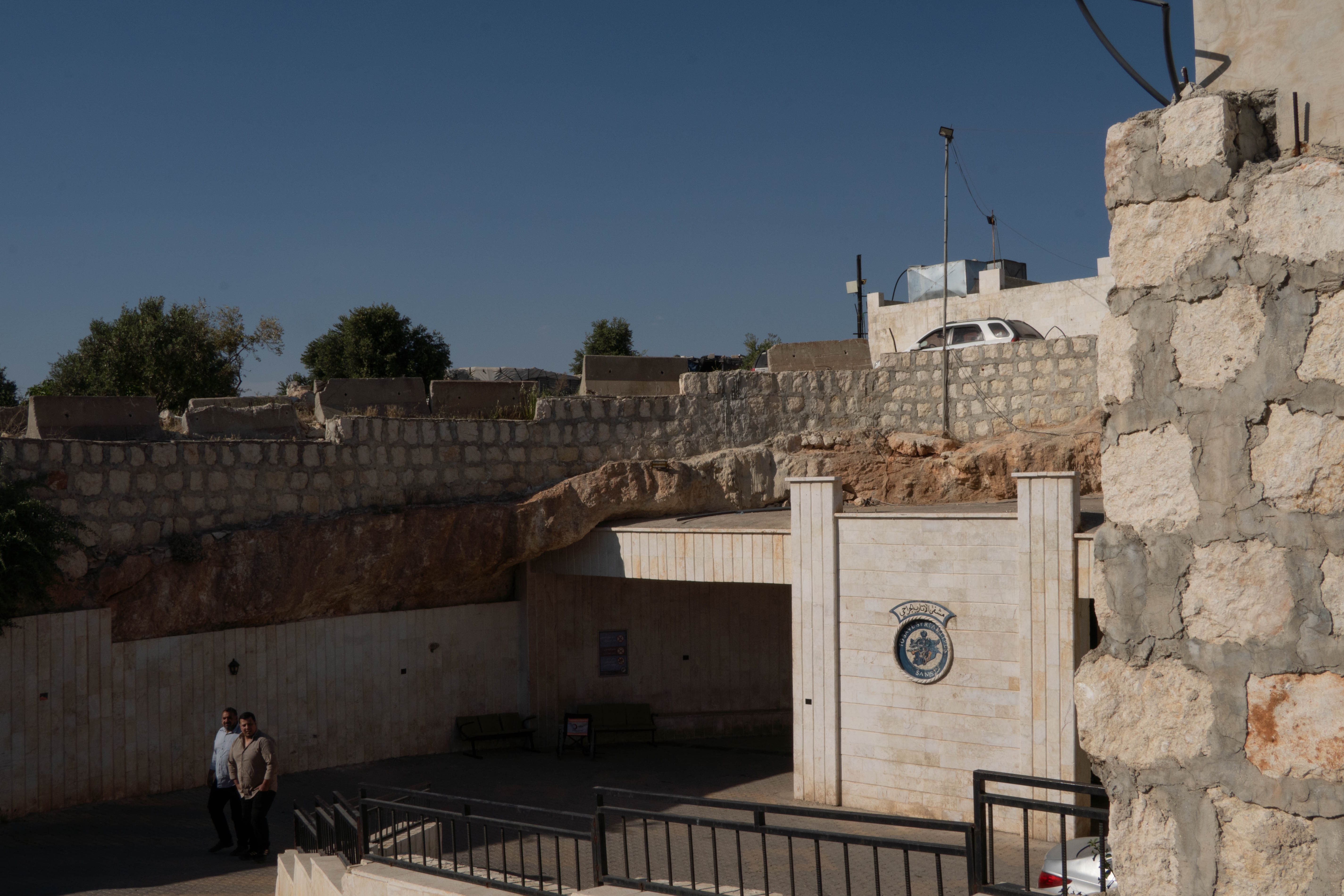 Entrance to the compound of Al-Atareb hospital. Idlib, Syria. April 28, 2025. (Anagha Nair/Raseef22)
Entrance to the compound of Al-Atareb hospital. Idlib, Syria. April 28, 2025. (Anagha Nair/Raseef22)
Entrance to the compound of Al-Atareb hospital. Idlib, Syria. April 28, 2025. (Anagha Nair/Raseef22)
Al-Atareb hospital is part of an extensive network of underground medical facilities in Syria that were often forced into darkness to escape the onslaught of bombs by the country’s former president Bashar Al-Assad and his ally, Russia. There were over 450 attacks on hospitals in the first six years of the Syrian civil war, of which over 90% were perpetrated by Assad and his allies, according to a 2017 report by the international relief organization Syrian American Medical Society (SAMS). Under the constant threat of attacks, the fortification of these facilities became “standard practice,” with underground hospitals broadly being categorized into three categories: basement, cave, and underground.
Al-Atareb was only about 4 kilometers away from where the regime’s army was stationed. Between 2016 and 2019, there were over 420 attacks on healthcare in the country, according to the World Health Organization (WHO).
Baccour is no stranger to working in facilities like Al-Atareb hospital. He was displaced from his home in Hama, Syria to the north of the country in 2012. In 2017, he was staffed at Al-Rahma hospital in Khan Sheikhoun, Idlib, at the time of the Assad regime’s lethal chemical attacks.
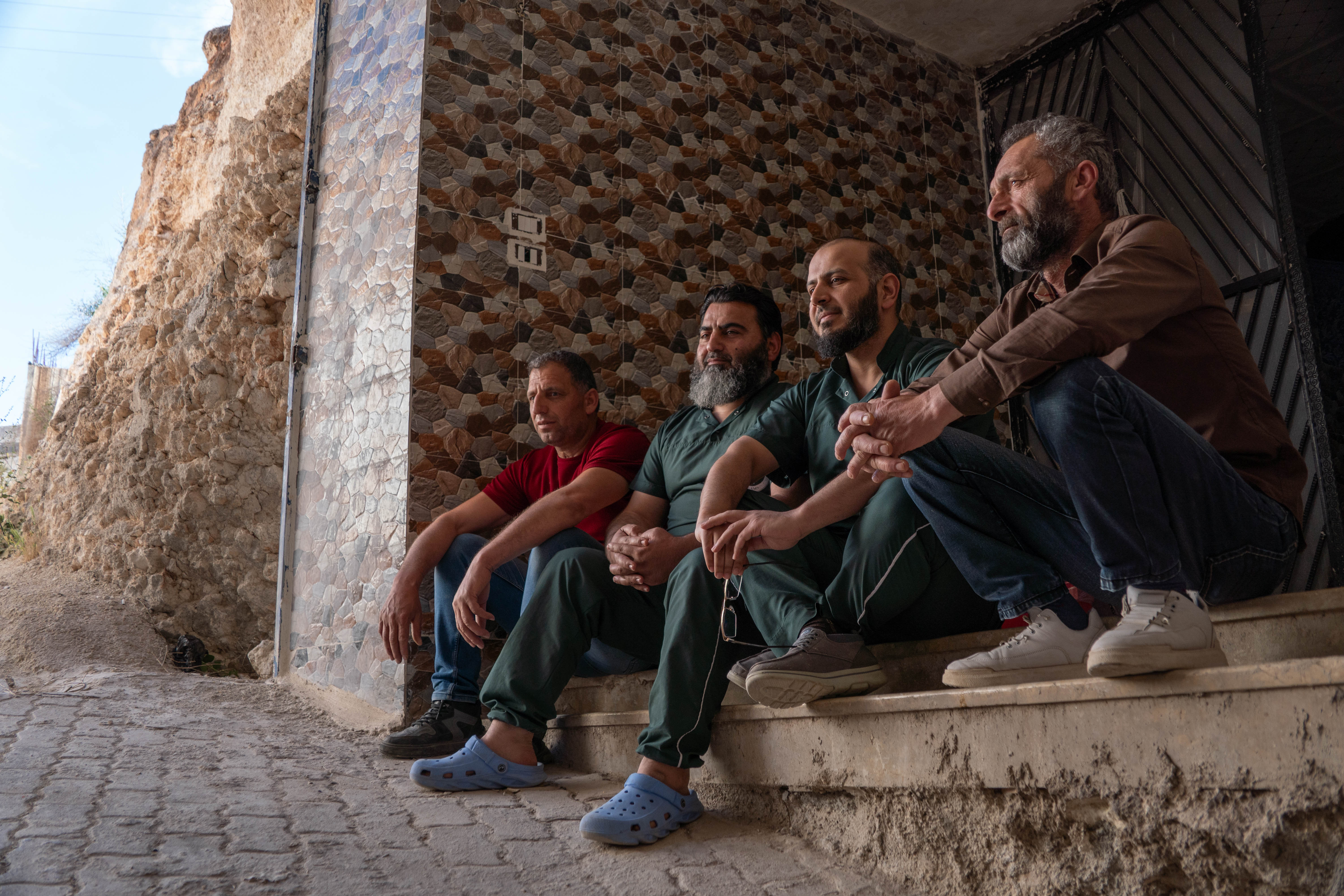 Staff at Al-Atareb seated on the hospital stairs. Idlib, Syria. April 28, 2025. (Anagha Nair/Raseef22)
Staff at Al-Atareb seated on the hospital stairs. Idlib, Syria. April 28, 2025. (Anagha Nair/Raseef22)
Staff at Al-Atareb seated on the hospital stairs. Idlib, Syria. April 28, 2025. (Anagha Nair/Raseef22)
“Initially we didn’t know that it was a chemical attack,” he explained. “The families coming here told us about the smell and to be careful.”
There were over 450 attacks on hospitals in the first six years of the Syrian civil war, of which over 90% were perpetrated by Assad and his allies. Under the constant threat of attacks, the fortification of these facilities became “standard practice,” with underground hospitals broadly being categorized into three categories: basement, cave, and underground.
In the early hours of the day, the facility received an uncharacteristic number of injuries, one that it wasn’t equipped to deal with. The attack killed over 90 people—30 of whom were children—and injured hundreds, according to Human Rights Watch (HRW). With his colleagues, Baccour began to wash the bodies of those who had been exposed to the gas, but the medical staff were no match for the number of those affected.
“They were coming in batches and batches,” he recounts.
Among the survivors of the chemical attack is Abdul Hameed Yousef, who lost his 11-month-old twins, Aya and Ahmed, to the poisonous gas. He fled his home with his children, but stopped to try and help his suffocating neighbors, when he lost consciousness. He woke up hours later in a hospital and upon returning home, he found his children and wife lifeless in an underground bunker.
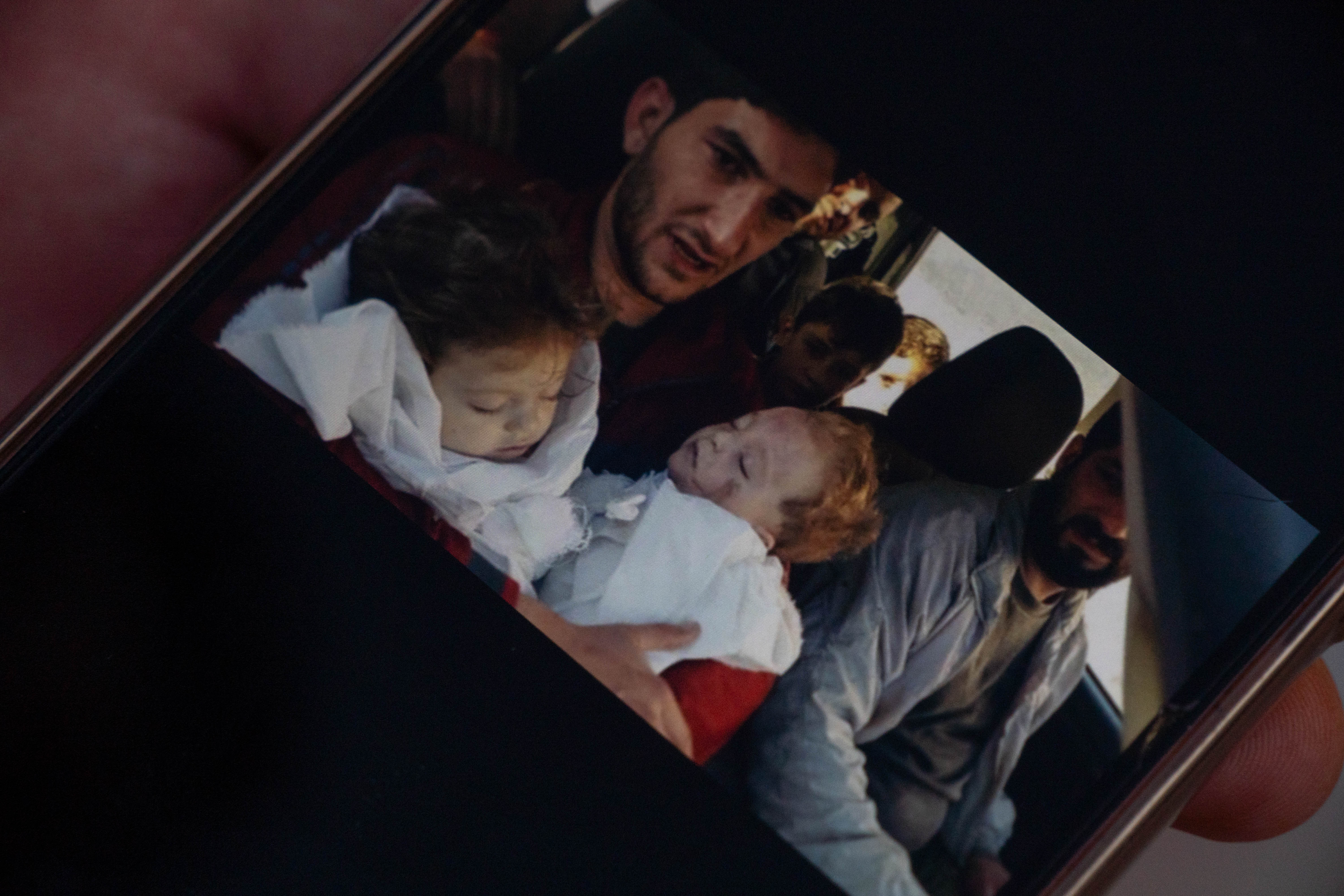 Yousef holding the bodies of his twins Aya and Ahmed after they were killed in the chemical attack. Idlib, Syria. April 28, 2025. (Anagha Nair/Raseef22)
Yousef holding the bodies of his twins Aya and Ahmed after they were killed in the chemical attack. Idlib, Syria. April 28, 2025. (Anagha Nair/Raseef22)
Yousef holding the bodies of his twins Aya and Ahmed after they were killed in the chemical attack. Idlib, Syria. April 28, 2025. (Anagha Nair/Raseef22)
“What I remember the most is the children who couldn’t breathe and how I couldn’t help them,” said Baccour. “The numbers were large and they needed intubation with oxygen to breathe, but the oxygen tubes were limited.”
In a gas attack, those at lower levels were more likely to be exposed to the poisoned air—yet those on higher levels were at greater risk from airstrikes.
As Baccour speaks, Dr. Mahmoud Sayah, his colleague, watches on. Sayah, manager of the hospital and an orthopedic, had his own share of hard decisions to make during the war, including leaving his four children at home every time he went to work.
Sayah said that in the months leading up to the final battle between Assad and the opposition, the rebel forces led by Hayat Tahrir al-Sham (HTS), the hospital would receive a large number of patients, often with horrific injuries.
“Everyday, we had patients who needed an amputation of their legs, femurs, hands…many were children [injured by] suicide drones,” he said.
In 2016, a hospital Dr. Sayah was working in was targeted by a Russian airstrike. He emerged alive from beneath the rubble, but never stopped going to work. Sitting in his living quarters, where Sayah has spent countless nights, he said that at night, he’d think of his 4 children—Abdullah, Mohammed, Yazan and Bashar, aged between 5 and 2.
Attacks on healthcare facilities constitute one of the “six grave violations” of international humanitarian law. Hospitals and health workers often witness the worst horrors in armed conflict. More recently, in the ongoing Israel-Hamas war in Gaza, Israel has killed over 50,000 people in the territory, and attacked “at least 36 hospitals.”
“When I’m with them, I forget hospitals, medicine and surgery,” he said, smiling.
Al-Atareb hospital is supported by SAMS. In 2022, the organization received about $9 million from the United States Agency for International Development (USAID). In February 2025, shortly after taking office as the president of the US, Donald Trump announced a massive slash in USAID programs, affecting development programs globally, including at Al-Atareb hospital.
Now, staff at the hospital are working on a voluntary basis, and Sayah admitted if things don’t change, they might have to close down operations. Still, this doesn’t dampen his appreciation for the peace they’re finally experiencing.
“We haven’t had a salary for two months, but I’m still happy,” Sayah said, grinning. He acknowledges, though, how his work is difficult on multiple fronts.
“Outside of the physical strain, there’s the mental stress of our children being at risk.”
Maha Abdullah, a 29-year-old midwife at the hospital echoed his sentiment. In five years, she has helped deliver an estimated 1,000 babies, sometimes under bombardment.
“Sometimes I’d wonder why I was here, why I was leaving my kids at home,” she shared. “Later I realized we had to be here.”
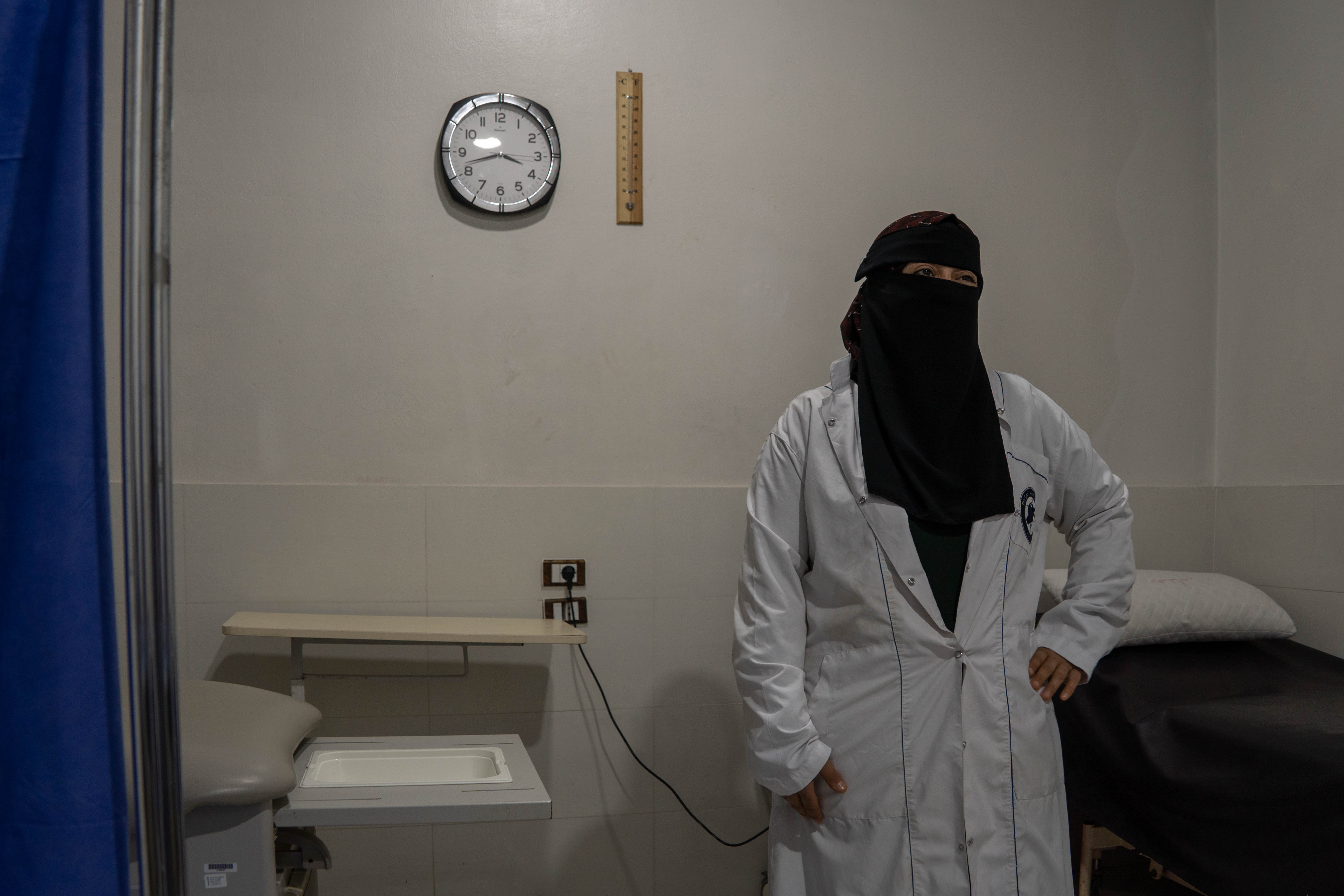 Maha Abdullah in the birthing room. Idlib, Syria. April 28, 2025. (Anagha Nair/Raseef22)
Maha Abdullah in the birthing room. Idlib, Syria. April 28, 2025. (Anagha Nair/Raseef22)
Maha Abdullah in the birthing room. Idlib, Syria. April 28, 2025. (Anagha Nair/Raseef22)
Al-Atareb hospital doesn’t have a gynecologist, only nurses and a midwife. Abdullah says that the birthing room she worked in held special significance in a time when death was omnipresent.
“[This room is proof that] life goes on,” she said. “And that people will resist.”
Attacks on healthcare facilities constitute one of the “six grave violations” of international humanitarian law. Hospitals and health workers often witness the worst horrors in armed conflict. More recently, in the ongoing Israel-Hamas war in Gaza, Israel has killed over 50,000 people in the territory, and attacked “at least 36 hospitals.” Doctors have also been arbitrarily detained and tortured, like in the case of Dr. Hussam Abu Safiya. Baccour emphasized the need to shield humanitarian workers from being targeted or caught in the crossfire, noting the burden medical workers carry on their shoulders in wartime.
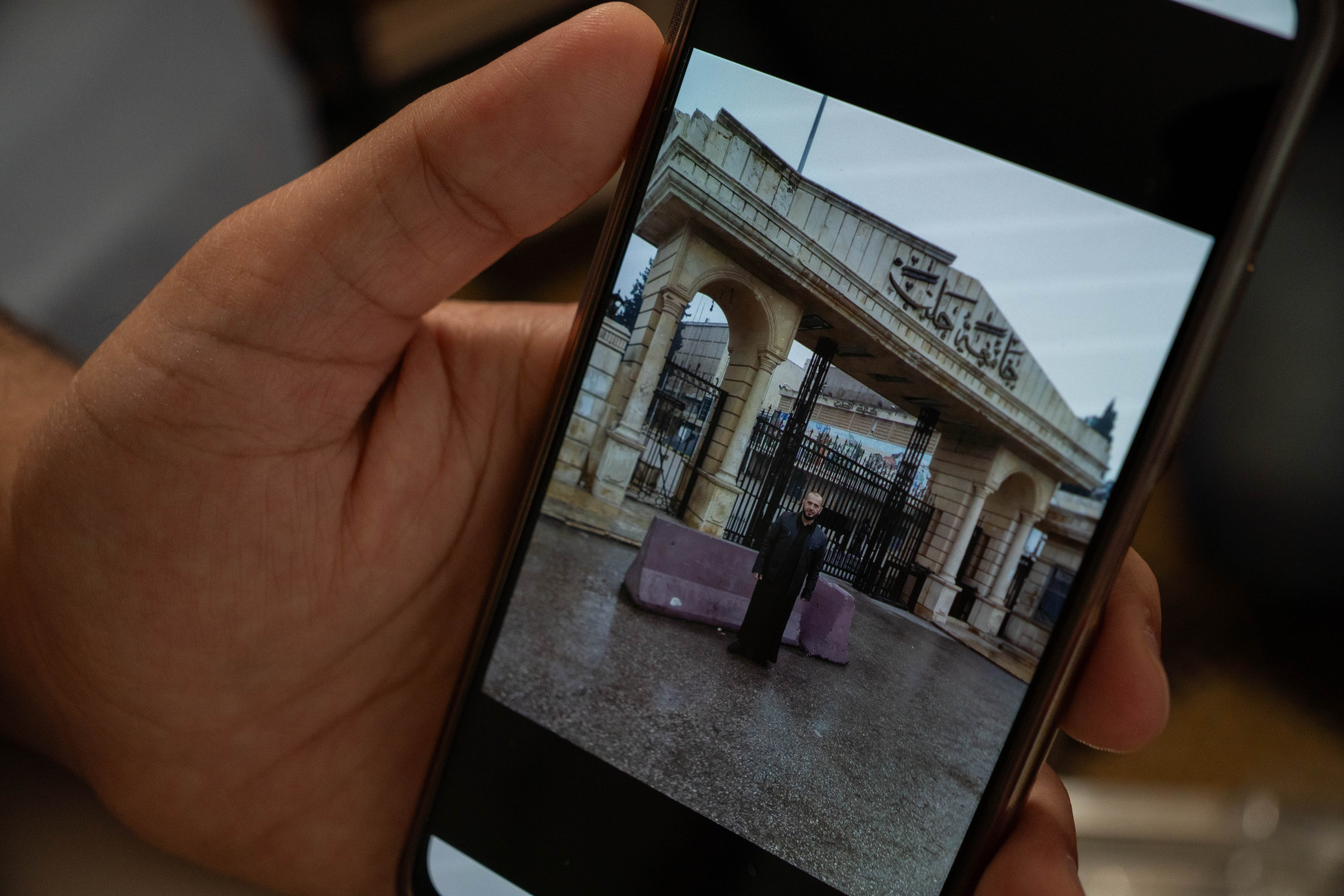 Dr. Sayah in front of Aleppo University’s Faculty of Medicine after the fall of the regime. Idlib, Syria. April 28, 2025. (Anagha Nair/Raseef22)
Dr. Sayah in front of Aleppo University’s Faculty of Medicine after the fall of the regime. Idlib, Syria. April 28, 2025. (Anagha Nair/Raseef22)
Dr. Sayah in front of Aleppo University’s Faculty of Medicine after the fall of the regime. Idlib, Syria. April 28, 2025. (Anagha Nair/Raseef22)
Despite all his negative experiences, Sayah explains that it was his belief in victory that kept him going.
“I always told myself I would return to Aleppo University’s Faculty of Medicine to take a photo [in front of it],” he says; a dream he fulfilled after Assad’s ousting.
“This is my job,” he said. “This is my home. It’s my country.”
Raseef22 is a not for profit entity. Our focus is on quality journalism. Every contribution to the NasRaseef membership goes directly towards journalism production. We stand independent, not accepting corporate sponsorships, sponsored content or political funding.
Support our mission to keep Raseef22 available to all readers by clicking here!
Interested in writing with us? Check our pitch process here!
